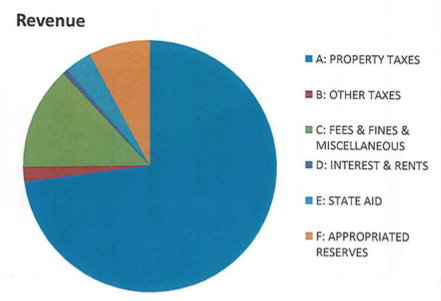The Village of Great Neck adopted a roughly $10.04 million budget on Tuesday night, marking a three-year streak of no increase to the tax levy.
While the budget increased $366,251 from $9.67 million to just shy of $10.04 million, or 3.78 percent, the tax levy remained stable at just over $7.3 million for the third year in a row.
This makes up 72.8 percent of the budget, with the rest coming from a combination of appropriated reserves, department revenue, state aid and other one-shot revenues like payments in lieu of taxes from PSEG and the Avalon Bay apartment complex.
Joe Gill, the village clerk-treasurer, said the village has been appropriating fund balance to balance the budget. Despite this appropriation though, the village has retained surpluses, he said, due to “one-shot” revenues and a healthy $6.5 million fund balance.
“Given the expectation that we have continued one-shots and the fact that we are so healthy with fund balance, it makes sense to continue to fund with fund balance rather than continue to raise taxes,” Gill said.
The tax rate is decreasing for both homestead and nonhomestead properties, Gill said.
Homestead properties will be taxed at 2.57 per $1,000 of assessed value, down from 2.68 last year. Nonhomestead properties – mainly commercial buildings and places with five or more residential units – will also see a tax rate decrease from 4.21 per $1,000 of assessed value to 4.05.
But because of a change in assessed values and homestead growth outpacing nonhomestead growth, Gill said the average homeowner will likely pay $2.58 more, while a nonhomestead property owner would see the bill decrease $41 per year.
“That creates a shift in the taxes away from the nonhomestead and to the homestead,” Gill said.
The average homestead property’s value went up from $906,061 to $945,377, while the average nonhomestead property’s value increased from $1.34 million to slightly under $1.39 million, Gill said. An average homestead owner pays $2,432 to the village, while a nonhomestead owner pays $5,614.
Great Neck village plans to spend $1.97 million, or 19.6 percent, of its budget on general government support, down $86,440, or 4.2 percent, from just over $2.05 million.
Employee benefits, meanwhile, are slated to increase $95,000 from $1.895 million to $1.99 million. Most of this increase comes from a budgeted $100,000 increase from $1.1 million to $1.2 million in health insurance costs.
The biggest increase in the budget comes with debt service, which is projected to go up $265,191 from about $1.26 million to $1.52 million.
Gill said this was because the village decided to borrow $3 million last year for road construction and paving projects, as well as equipment replacements for the Public Works Department.
Gill also said the village plans to pay down roughly the projected increase in debt, so it will be reverting back to current debt service costs in about two years.
The village’s current debt is $9.1 million.
The village has also budgeted just shy of $1.83 million for public safety, which includes traffic control, fire protection and safety inspection. The biggest portion of this is the village’s fire protection contract with the Alert Fire Company, which is going up $25,000 to $1.31 million.
General and community environment costs are also projected to increase from $1.2 million to $1.24 million, a difference of $39,000.
This is largely due to refuse and garbage costs increasing from almost $1.14 million to nearly $1.18 million. Contractual obligations are expected to increase $25,000 from $576,100 to $601,100, while personal services costs are budgeted to rise $13,000 from $523,000 to $536,000.
Street cleaning costs are budgeted to stay the same at $36,100.
The transportation budget, which goes toward items like snow removal and street administration and maintenance, is increasing $28,500 from almost $1.17 million to just shy of $1.2 million.
Gill said the village is also experiencing savings on electricity and maintenance for streetlights due to its LED street lighting project.
The $675,000 project was partially reimbursed by a $250,000 grant and $75,000 due to an audit, making it a net cost of $350,000. The village will now be seeing about $80,000 a year in savings, Gill said, with $55,000 of that being from electrical costs and $25,000 from maintenance costs.
“That means a pay back of 4.39 years,” Gill said.



